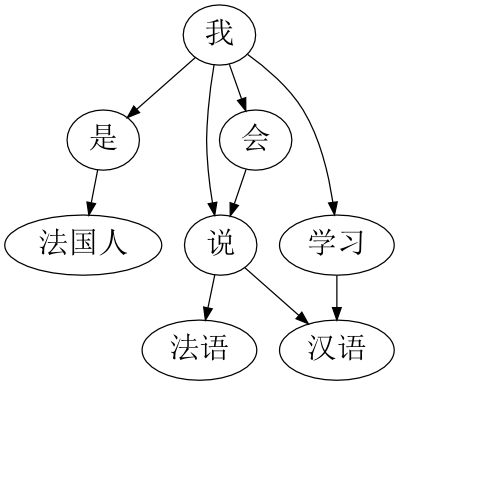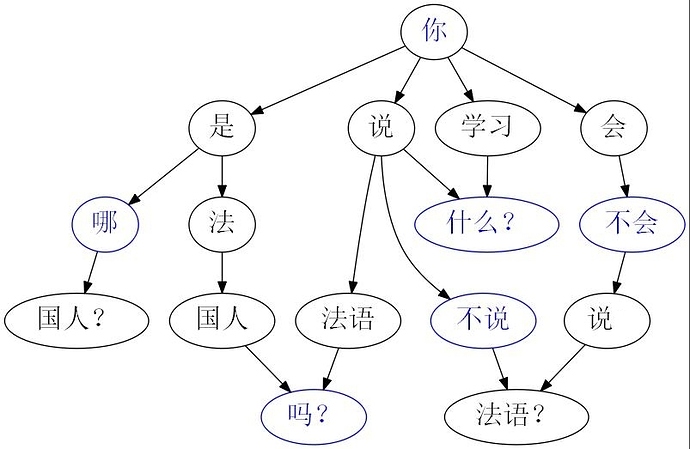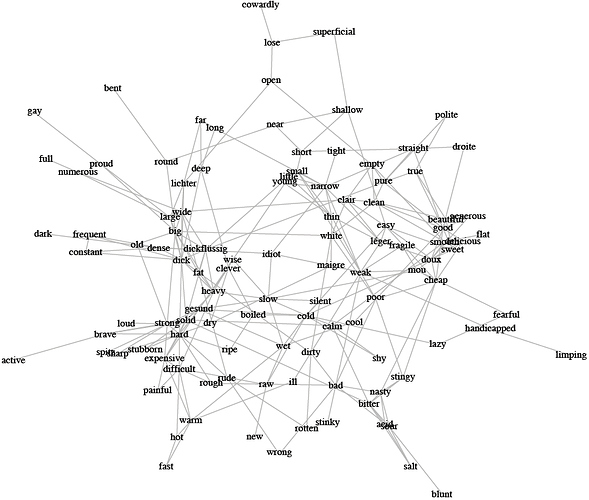The best way to learn new words is to learn them with connection with other words or within a context. If we try to memorize a list of words without any connection to each other we generally fail.
An interresting approach is the so-called semantic graph (语义图). A semantic graph is a picture which shows connexions between words. I drew a very simple example for newbies.

However I do not know any published methode which use these kind of presentation. If someone knows please let me know.
One can also draw more complex graph as the following which gives the questions related with the first graph.
One can also extend to substitution exercices: ( in the second graph change 法 and 法语 by the corresponding words for the other languages)
I used graphviz to generate all the graph of this post. I just have to type some text for instance the fisrt graph was generated from the input:
digraph { node [ fontname=SimSun, fontsize=24 ]
我 -> 是;
是 -> 法国人;
我 -> 说 ;
说 -> 法语 ;
说 -> 汉语 ;
我 ->会 ;
会 ->说 ;
我 ->学习;
学习 -> 汉语;
}
graphviz is a freeware that you can download there :
http://www.graphviz.org/Download..php
你觉得怎么样?






